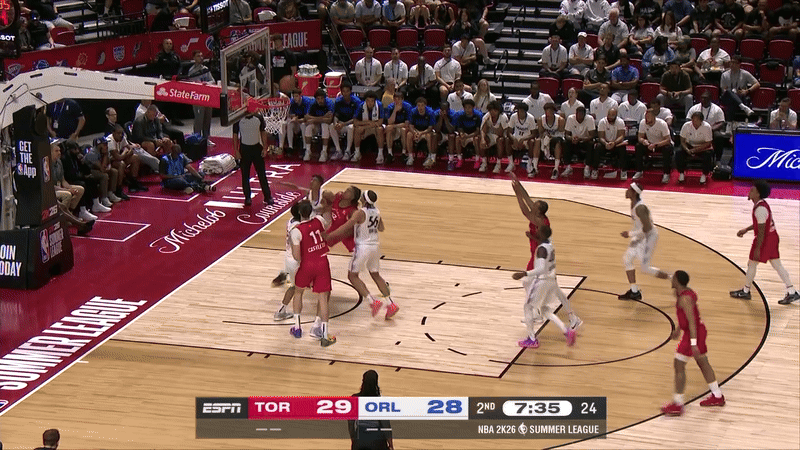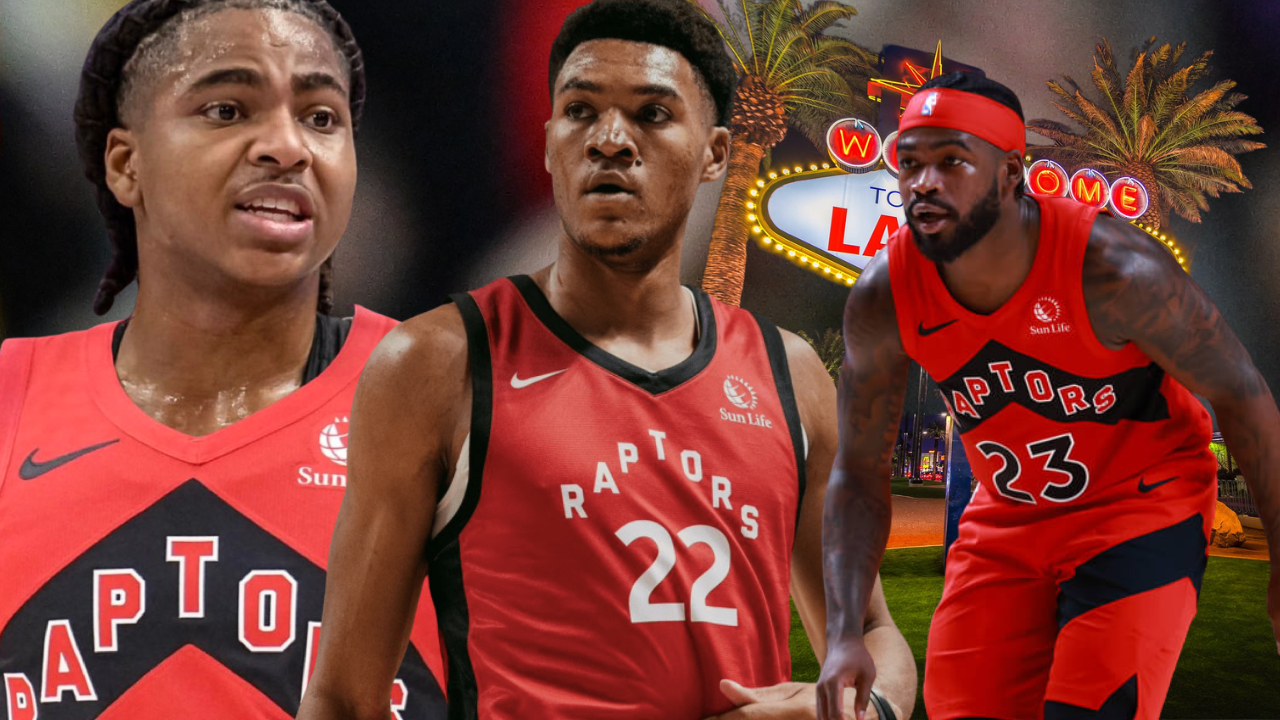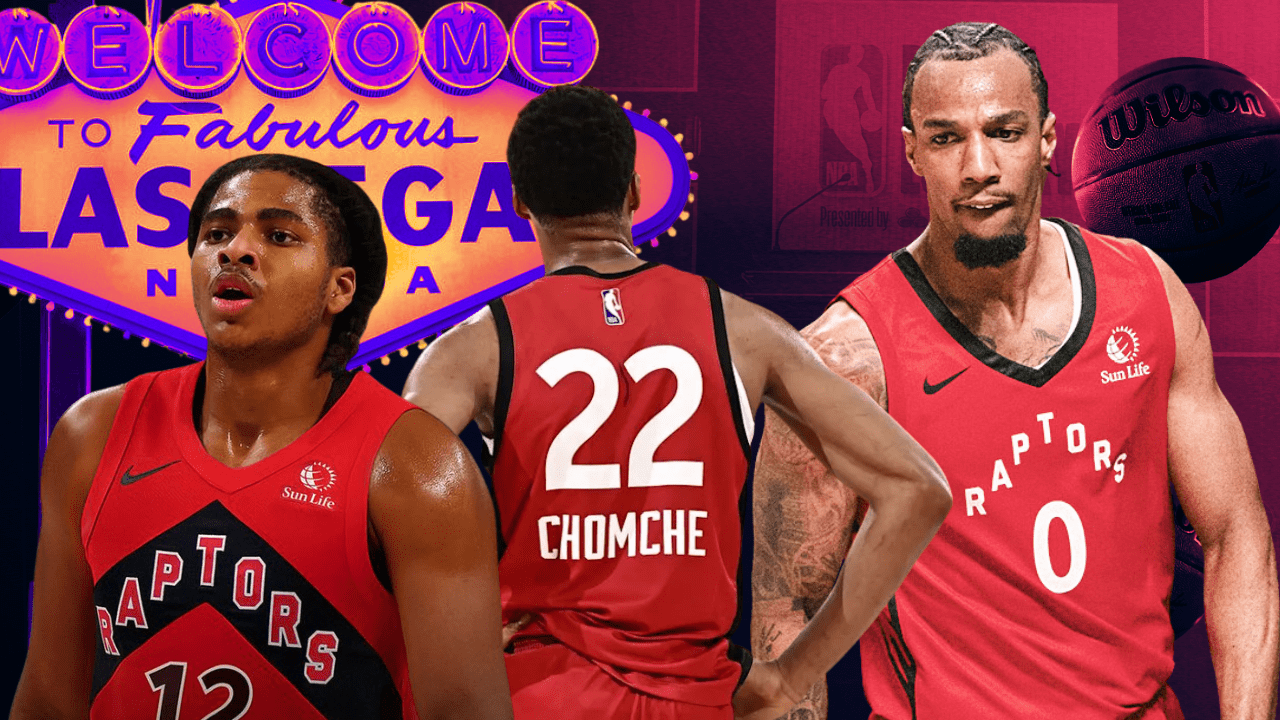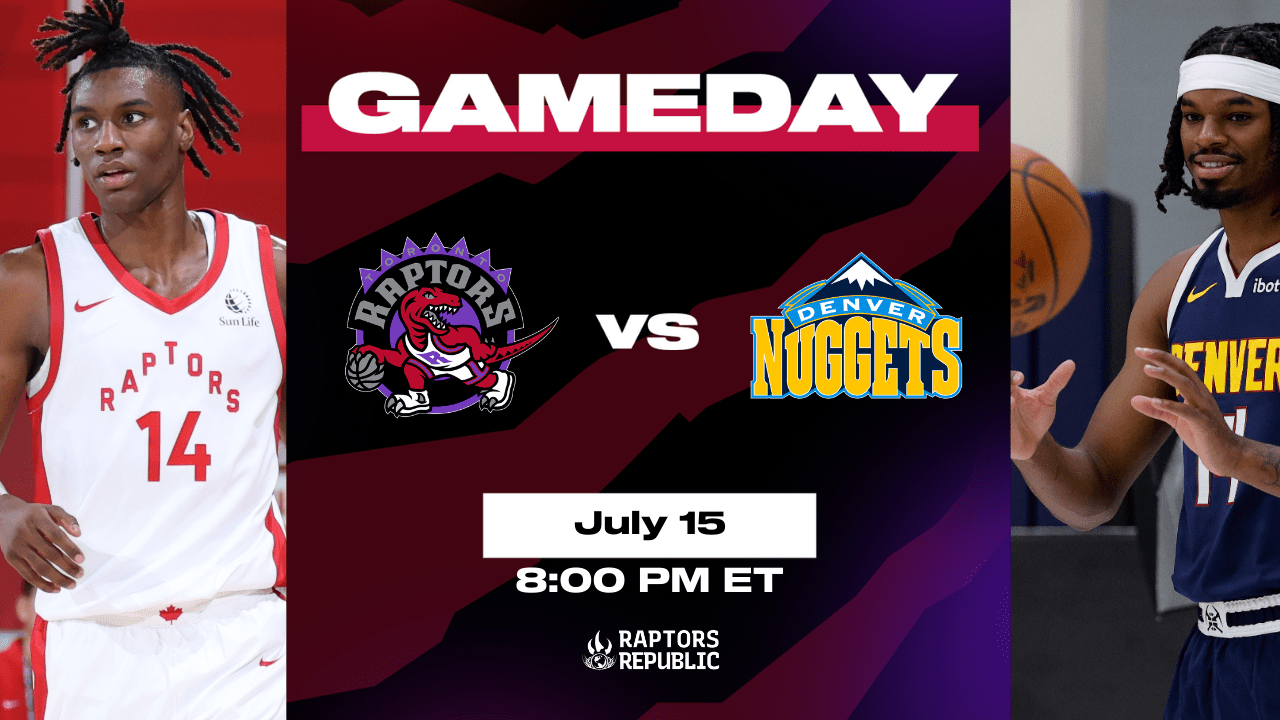63 turnovers that turned into 84 points across two Summer League games for the Toronto Raptors in Vegas.
It’s the stat that will define the way the Raptors want to play defensively for the foreseeable future.
Admittedly, it’s hard to take away too much from Summer League basketball, particularly anything schematically, but when at least eight of the players on the team are set to be on the main roster (some playing real rotation minutes), it can be the bat signal for what things look like moving forward.
Ball pressure is the name of the game. Coach Rajakovic started the 2024-2025 season stating that the ‘MIG’ or ‘Most Important Guy’ on the floor for the Raptors defensively will be the player guarding the ball. The Raptors stressed the importance of forcing turnovers and causing deflections, even at the cost of conceding corner threes, a formula similar to what we saw in the Finals with the Oklahoma City Thunder and Indiana Pacers.
Unlike those teams, the Raptors struggled at first to establish that identity, but eventually, as the season progressed, that ball pressure was the impetus for a team that was seventh in defensive rating in their final 50 games. The Raptors pressed more than almost any team in the NBA last season, ranking in the 87th percentile in how frequently they pressured the ball. They allowed just 0.892 points per possession when in a press, a formidable number when you consider the Raptors won just 30 games.
That’s why it comes as no surprise that the Raptors Summer League roster plays with a similar sense of organized chaos. They pressure the ball; they pick up full court, they’re crowding driving lanes, using their length to rotate and recover out to openings. The bench is yelling after every stolen ball, blocked shot, or defensive stop, like crowds in the Coliseum cheering on Gladiators.
It’s madness to watch live.
Opposing ballhandlers have had to deal with relentless ball pressure from the likes of Jamal Shead, Ja’Kobe Walter, Alijah Martin, and Chucky Hepburn. If they somehow get through that, the Raptors’ aggressive pick-and-roll coverage asks wings and bigs like Jonathan Mogbo, Collin Murray-Boyles, and Ulrich Chomche to switch out and guard ballhandlers in space. Even AJ Lawson, Jamison Battle, and Collin Castleton — three players who are not known for their defensive acumen — are buying into the philosophy and pressuring the ball.
The results? 32 steals, 10 blocked shots, and 63 forced turnovers.
Possessions like this have been commonplace. Opposing teams are forcing them to chew up the shot clock, stumble into their offensive actions, and eventually overthink what they’re doing.
By picking up the ball higher up the floor, you’re forcing the offense to think faster.

It helps that the Raptors have the requisite length on the help side to protect themselves amidst all the pressure. Between CMB, Mogbo, and Chomche, the Raptors can be over-aggressive in their coverages, knowing they have the defensive playmakers that can insulate them from mistakes.
What makes this ball pressure crucial to the Raptors’ goals is its direct impact on creating offensive opportunities for a team that struggles with self-creation. The Raptors were 3rd in transition frequency last season, first in frequency off of steals, and second when it came off of live rebounds.
This Summer League group has embodied that philosophy, scoring 51 fastbreak points through two games and generating 84 points off turnovers.
There was a moment in their game versus the Magic where Castleton messed up their pick-and-roll coverage, and Shead pointed it out to him on the next stoppage. Castleton took the note, incorporated it in the next possession, the Raptors got a stop, and Shead began clapping and pointing over to his big man with appreciation. It’s just one example of how accountable they’ve all been to each other throughout this process.
“Some people are born to be models, some people are born to be firefighters… that group in that locker room was born to play defense,” said Raptors Summer League Coach James Wade. They play like it.
Of course, the next step for this group of young players is to show it on an NBA floor against better levels of competition. But the Raptors have found themselves a unique buy-in from their young bench players.
It’s rare for a group of young players to come in and set the tone for how a team wants to play, but the Raptors have experienced this before. In 2016, with the likes of Pascal Siakam, Fred VanVleet, Jakob Poeltl, and Delon Wright, Toronto’s bench mob formed its own identity. Their buy-in transformed the Raptors from a fun Eastern Conference Playoff team to a deep, title-contending roster.
Perhaps this group can do the same.
More than anything, it puts the pressure on the rest of the roster, particularly the starters and stars of this team, in Scottie Barnes, Brandon Ingram, RJ Barrett, and Immanuel Quickley, to buy into the philosophy the Raptors want to play with.
Perhaps this is the spark that the group needs to take the next step and to galvanize from within, thanks to a group of young players who are born to play defense.
At the very least, one thing is clear:
This is just a glimpse of what’s to come.



